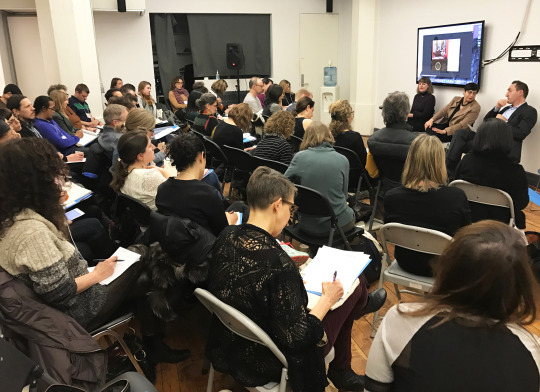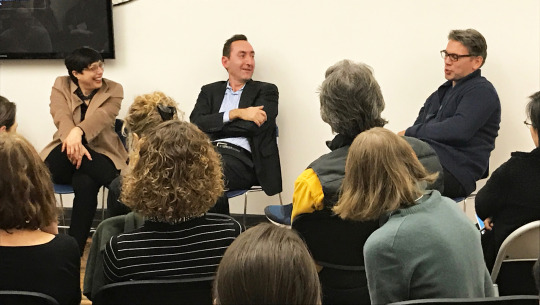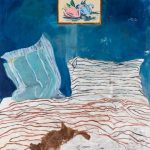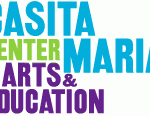The Takeaway: Marketing for Artists Panel
Sharing Key Insights from Industry Experts Robin Cembalest, Ben
Hartley, and Bart Keijsers Koning
The
College Art Association (CAA) and NYFA recently partnered to present “The
Artist as Entrepreneur,” a day-long professional development boot camp that
covers the fundamental principles of sustaining a career in the arts.
Artists gained hands-on learning in the areas of strategic planning,
finance, and marketing. To conclude the day, journalist and editorial strategist
Robin Cembalest, executive Ben Hartley, and gallerist Bart Keijsers Koning participated in a panel discussing marketing
techniques for artists.
Cembalest
started the conversation with examples of Instagram accounts she follows. The featured accounts – artists Rebecca Morgan, Teresita Fernandez, and Hank Willis Thomas –
showcase content that is interesting, culturally relevant, and distinguishes
artists from the crowd. Cembalest advised attendees to consider Instagram
content as they would a diary or magazine: an ongoing way to
communicate the artist’s point of view. She recommended using the platform as a
tool for networking, marketing, and activism saying specifically, “you need to think about
representational justice” when posting to social media. Cembalest also emphasized
the importance of using social platforms to build community through support of
friends, colleagues, and causes.
Hartley recommended that artists
create content with their “brand” in mind. He explained that an artist’s brand
is the reason why they should be online in the first place, and encouraged
attendees to look not only at other artists’ work but to keep current on art news, and what curators are thinking and caring about. He recommended that artists
check out Cecilia Alemani, museummammy/Kimberly Drew, and Nancy Spector on Instagram and
websites including ARTnews, Artnet News, JeffKoons.com, and SEEN/UNSEEN, the site of artist Tavares Strachan. His advice in a nutshell?
Good Instagram feeds should have an agenda and point of view; it’s OK to show
personal stuff on Instagram; and websites are necessary and should be cleanly
designed, with big images and an easy-to-find biography and contact
information.
Keijsers Koning mentioned that it’s important for artists to
be clear about what they share, be it a proportionate image to show the size of a
piece or including a description of the work in the comment box (material, title,
etc.). He suggested that artists use Instagram to give further insights into their
practice and hence a more in-depth look into their visual language and point of
view through process and inspiration shots. He recommends that artists link their
Instagram page to their website, blog, Facebook, or other web presence.
Our experts
fielded a number of questions during the panel, which we’ve summarized briefly
below.

Question & Answer
Q: How do you reach the
audience you want to reach?
A: Identify who you are trying to reach and understand what you want
them to know. Bring people to you by using all of the tools to bring your work
to life. Think about the right platform to use for your audience.
Q: After reaching a
certain number of followers on social media, I feel like I have exhausted my
networks. How do I reach more people?
A: Follow people that you
like and some might follow you back. Go to larger events or gallery shows.
Don’t expect a big return right away, it takes time to build your following.
Q: Is there a rule of
thumb for hashtag use?
A: Not really, but it will
be more interesting to apply micro networking to get people to see your work.
The more hashtags you use, the more people see you. Don’t use the hashtag “art”
for example but do hashtag the brand of the paper you are using for a piece.
Q: Are there specific
platforms that artists should be investing time in?
A: Investing in selling
artwork online is not worth it. Use platforms to get your opinion out to the
world and invest in platforms that will get the word out about your work and
who you are.
Q: How should artists with
“day jobs” market themselves online? Is it best to represent together or
separate?
A: In most all cases it is
best to represent together so you don’t segment your audience or confuse yourself
or other people.
Q: Do you have any recommendations
on naming your Instagram account?
A: It depends on what your
name is (not John Smith, for example). If you decide on something clever or
playful make it something that describes who you are. Your account name should
be something you can easily say at a party and have people remember.
Q: Are people really
paying attention to my Instagram account?
A: Yes! People want to
know who your community is and who follows you. They are going to look at your
grid and ask who do I know that follows this person? Galleries are looking at
this.
Q: Can you offer some
advice on what to post during these turbulent political times? How do you
balance the professional with the personal?
A: What you post and say makes a statement, even if your posts are not overtly political or avoid politics altogether. Instead of
curating the news, focus on how you can support communities that are being
marginalized by current politics. Find ways to post things that bring hope and
create a dialogue, not a monologue.
Q: Do you have networking
tips for artists?
A: Networking is about
cultivating relationships and not always asking something of others.
Incorporate Customer Relationship Management (CRM) into your marketing plan if
it makes sense for your practice and you have time to dedicate to it. For
example, help maintain interest in your work by finding out what type of
content your audience likes and communicating it to them on a regular basis.
In Conclusion:
Use the digital world to create an artistic brand
for yourself. Identify your audience and remember it can be anyone you
want it to be. Be intentional about what you post so that your audience begins
to understand exactly what your art is about and why it is
important. People are paying attention to what you do online, so use your time
wisely by creating content that is interesting and displaying your message
clearly and consistently.
– Rosario Calatayud Serna, Program Associate, NYFA Learning, and Amy Aronoff, Communications Officer
This program is part of NYFA Learning, which includes professional development for artists and arts administrators. Sign up for NYFA’s free bi-weekly newsletter to receive updates on future programs.
Top Image from L to R: Robin Cembalest, Ben Hartley, and Bart Keijsers Koning, Photo Credit: Alicia Ehni; Bottom Image: Marketing for Artists panel, Photo Credit: Alicia Ehni.





